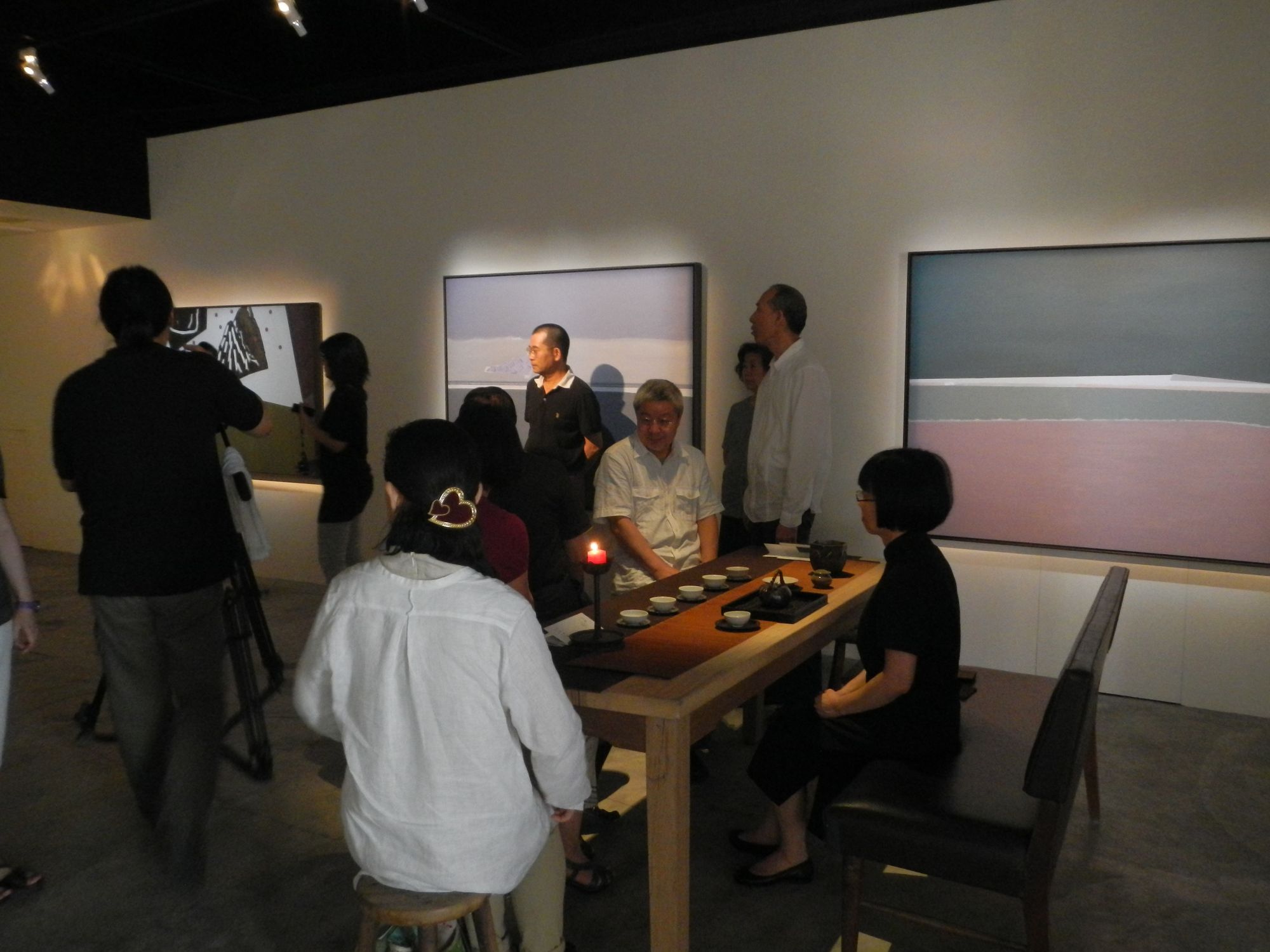An education in Ceramics
Studying with Teaparker is quite the education; he has us identifying teas we didn’t know exist, and anytime he takes a cup or teapot off the shelf it could be Tang Dynasty or modern trash and we have under a minute to determine what were holding (when we’re even allowed to touch it!). Now the difference between Tang and Trash isn’t that hard, but Song and Yuan? Northern Song and Early Yuan? A piece from the Qian Long era v a piece from Qian Long’s palace?
I trust my taste buds, and I’m quite good with YiXings, but I still have a lot to learn about dating ceramics. There is the obvious color, shape, and paterns to look at, and the slightly less obvious clay composition, firing marks, and glaze drips, and then there’s the not-at-all-obvious light diffusion and refraction, glaze-paint interaction, and signs of gas firing (meaning modern).
Really all you can do is look and touch any piece you find; your not going to be breaking or grinding anything, and even if you could, it wouldn’t help much – you can’t carbon date clay as its organic! (Clarification: That is, you can’t carbon date the clay itself to determine the age of piece).
Some techniques include shining a light at the piece, or running your finger over edges, or checking out the “bleed” of the pattern. Early Ming wear has a wide bleed, where the cobalt blue fades out and tinges all the visible white, but by the mid 1400’s they had refined the technique and the lines became sharper, and the white surrounding it became cleaner.
Many Qing pieces have visible European influence, a recognizably modern style, and the clay is harder and more pure. Though the famous blue and white pieces were produced as early as the 9th century and common in the Ming, the kilns of Jingdezhen didn’t begin double glazing their wares until late in the Qing Dynasty; any high gloss surface with underlying cobalt art is from the Qing at earliest.
Furthermore, I am ignoring the many “refined European” pieces (which I oft find to be kitsch). They can have a variety of shapes and odd mash-ups of Asian-Western style; I am far from an expert in these pieces, but hundreds of thousands of pounds of them were shipped to the west and they are not too hard to find.

Recently, I mistook a dark seaweed green tea caddy (visible in the photo above) from the Ming Dyanasty as an early Qing Piece. There are a few reasons I made the mistake; First, I often underestimate the availability of vibrant coloration in the glazes of earlier Dynasties – but they have been present in teaware since (at least) the Tang! Second, the glaze of this piece didn’t defuse the light; it had pinpoint radiance (partially the effect of the artistic lighting in the gallery) which I associate with later pieces – but high gloss glaze made from ash is not a modern innovation in ceramics. In the future I would do well to remember that glossy doesn’t mean new! Finally, the shape of the jar, with a flower shaped lid and a refined squat body and no ornamentation lacked notable European influence – this could have gone either way.
Lesson Learned. This time. I hope.
To end, The best suggestion I have is to drink out of any piece (if bowl or cup), and feel how it effects the tea (you are buying these to use, right?). All of our experience at the Tea Institute has shown us just how much the quality of the wares effect the sensory experience. Part of this is perception – the perceived quality of any tea is effected by its surroundings; part of it is physical – the sensation of the cup in your hand, the shape of the lip (which effects the ratio of tea to air in a slurp), how much tea you sip at a time; and, least understood, part of it is chemical – the Institute is undertaking research on the chemical effects of material interaction with tea. We believe their is a sodium ion exchange with most glazes affecting the taste, but this research is in its infancy!
In the end, your wares should be inert or “improve the experience” of your tea session; I wont go as far as to say that it should make your tea taste better in this post – that will need a few pages of its own.